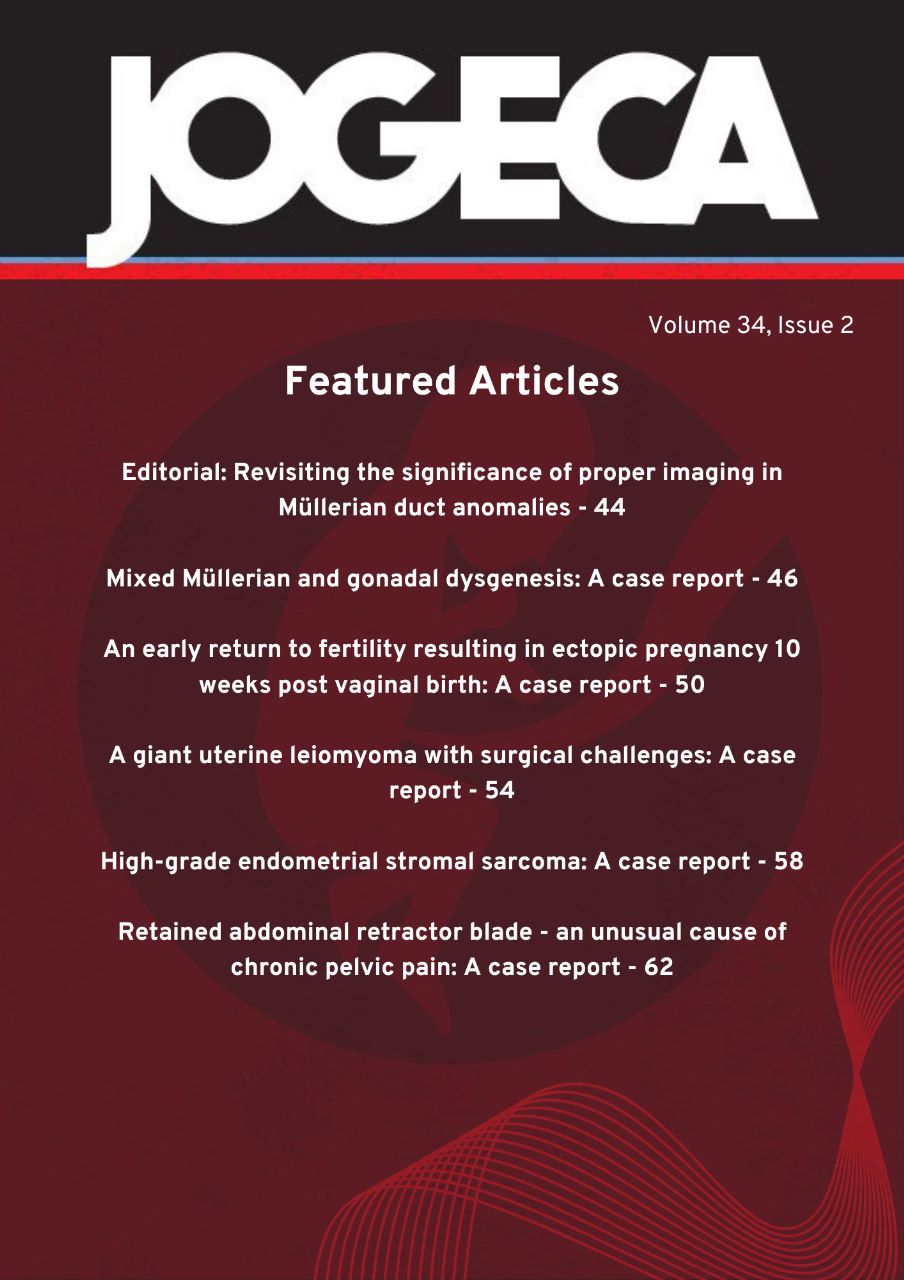CHANGES IN PATTERN OF MATERNAL NEAR MISS MORBIDITY AFTER INTRODUCTION OF FREE MATERNITY POLICY IN A COUNTY HOSPITAL IN KENYA: A QUASI EXPERIMENTAL STUDY
DOI:
https://doi.org/10.59692/jogeca.v30i2.273Abstract
Background: The cost of healthcare is a major barrier to access of essential maternal services in the developing world. On 1st June 2013, Kenya introduced Free Maternity Services (FMS) in an effort to promote access and improve maternal outcomes. Subsequently, service utilization increased, resulting in pressure on existing resources, potentially compromising quality of care. The World Health Organization (WHO) maternal near
miss tool was used to evaluate maternal outcomes under FMS in a county referral hospital in Kenya. The objective was to compare the pattern of maternal near-miss morbidity before and after FMS.
Methodology:
Study design: Retrospective quasi-experimental (pre-post type).
Treatment group: Records of 186 women with near-miss morbidity after introduction of FMS. Post-period was June 2014 to May 2016.
Comparison group: Records of 185 women with near-miss morbidity before introduction of FMS. Pre period was October 2010 to May 2013.
Setting: Embu County Referral Hospital in Eastern Kenya.
Study population: Women offered maternity services at Embu county referral hospital between during the pre- and post-periods.
Data collection and analysis: The data abstraction form was adopted from the World Health Organization (WHO) Maternal Near-Miss tool. Analysis used Statistical Package for Social Science (SPSS) version 24. Pierson Chi-square test of significance was applied.
Results: The commonest causes of maternal near-miss was severe post-partum hemorrhage (S.PPH) and severe preeclampsia. S.PPH increased (91.0% up from 80.0% p= 0.005), while that of severe preeclampsia reduced in the post-period (13.0% vs. 6.5%, p= 0.029). Anemia was the biggest contributory cause of near misses but reduced in the post-period (43.8% vs. 30.1%, p= 0.020). Use of blood products increased significantly in the post-period (68.2% vs 78.5%, p< 0.001).
Conclusion: S.PPH remains a threat to women after introduction of free maternity services. There’s need to optimize care maternities so as to reduce the risk of maternal mortality.
Downloads
Published
How to Cite
Issue
Section
Categories
License
Copyright (c) 2018 Authors

This work is licensed under a Creative Commons Attribution 4.0 International License.




